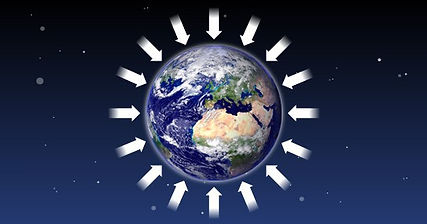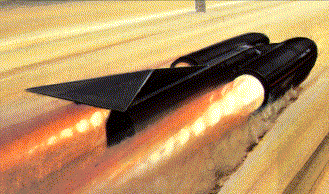
Aerodynamics

We can break the word aerodynamics into two parts. “Aero”, a prefix meaning related to air, and “dynamics”, meaning a branch of mechanics related to the motion of bodies under the action of forces. The definition of aerodynamics is “the study of the properties of moving air, and especially of the interaction between the air and solid bodies moving through it.” Although aerodynamics applies to practically everything that moves, from a human to a ship, aerodynamics is most often thought of as applying to anything that flies, most notably planes. So, with that in mind, let's continue on with the four forces of flight.

The four forces of flight are lift, weight, thrust and drag. These forces make an object move faster, slower, up or down. The quantity of these forces compared to the opposite of that force will determine how an object moves through the air.

Weight comes from gravity pulling down on things. Everything on Earth has weight. The weight of an object tells us how much force to use or how strong the thrust needs to be to go in the opposite direction of gravity, or basically, up. To find weight you can multiply the amount of gravity by the mass of the object.

Lift is the force that lets an object go up, so it is the opposite of gravity and therefore the opposite of weight. Everything that flies must need more lift than weight to lift up off the ground. So the heavier something weighs, the more lift it needs to lift up off the ground. This lift can be acquired in various ways, all depending on the purpose and design of the machine. For example, a helicopter uses a propeller while a rocket uses thrusters.

Drag is the force that slows objects down when they are moving. It pulls back on them as they move. Drag is the source of resistance, which is what makes it harder to move. The shaping of an object can affect drag. The flatter and wider a surface is, the more drag it creates. The matter that you are moving through also affects drag. Moving through water creates more drag than moving through air. The more air that flows over a surface, the more drag it creates.

Thrust is what pushes an object forward. It is the opposite of drag. In order to fly forward, an airplane must have more thrust than drag. The more thrust an object has, the faster it will go. For example, a plane will go faster than a drone because its jet engines are much bigger than the propellers of a drone.

One important thing to note is that the laws of aerodynamics only apply on planets with atmospheres. So basically, aerodynamics don't exist in the vacuum of space. This is because there is no air in space and aerodynamics is all about how air flows around an object. Also, keep in mind that there are many different aspects to aerodynamics, such as altitude, pitch, roll and yaw, among others. I have talked mostly about the four forces of flight, which provide a foundation for the basics of aerodynamics.
